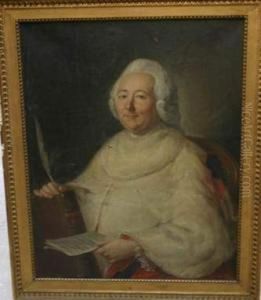Marie Parrocel Paintings
Marie Parrocel was a French artist born in 1673 in Paris, France. She came from a family of esteemed artists, which included her grandfather, Barthélemy Parrocel, and her father, Joseph Parrocel, who were both well-known for their battle scenes and equestrian subjects. Despite the challenges faced by women in the arts during the 17th and 18th centuries, Marie Parrocel managed to carve out her own space as a painter.
Marie Parrocel's education in the arts was likely influenced by her family's artistic tradition. While there is not much documented about her early training, it is possible that she received instruction from her father or other relatives. She specialized in miniatures and religious subjects, displaying a delicate touch and attention to detail that were admired in her time.
Though women were largely excluded from formal art academies and could not expect to receive large public commissions, Parrocel was able to exhibit her work through the support of her family and their connections. She participated in the Paris Salons, which were the official art exhibitions of the Académie des Beaux-Arts in Paris. Her work received positive attention, allowing her to gain a modest reputation as an artist in her own right.
Unfortunately, many of Marie Parrocel's works have not survived, or their attribution remains uncertain, which is a common issue for female artists of her time. Consequently, her oeuvre is not as well known or studied as that of her male contemporaries. Nonetheless, she is recognized for her contributions to the arts and for her role in a family of artists that spanned several generations.
Marie Parrocel died in 1741, leaving behind a legacy tied to her family's artistic achievements. Her life and work are often overshadowed by the more prominent members of the Parrocel family, but she remains a figure of interest for those studying the role of women in the arts during the Baroque period.
